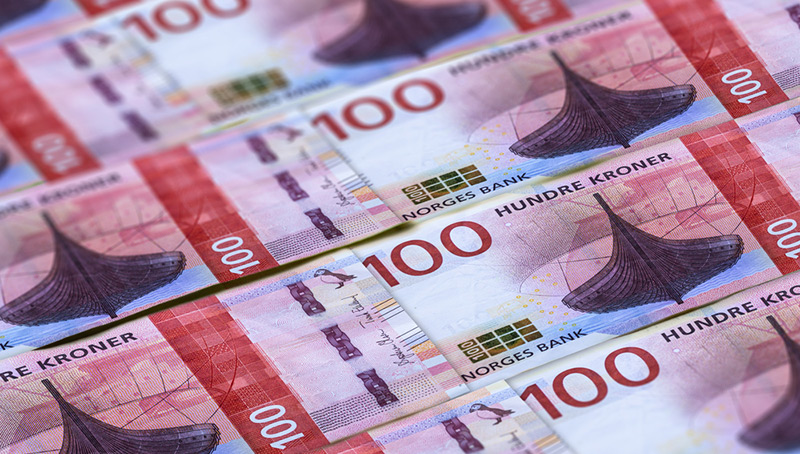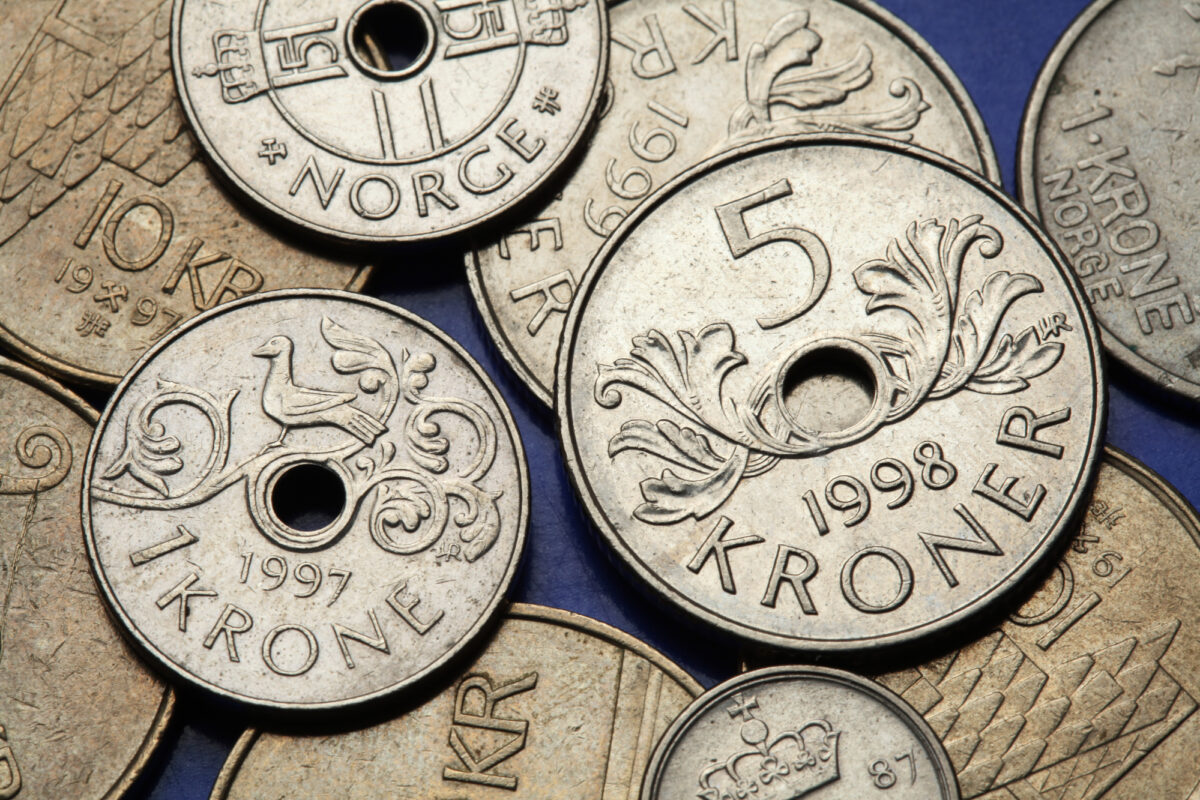
Norway’s currency is the Norwegian krone, but how much do you really know about it? Here is the history and other things to know about the currency of Norway.
When it comes to money in Norway, the high cost of living is the first thing that springs to most people's minds. That's no surprise! But one thing that will help is to understand Norway's currency as soon as possible. This helps appreciate the full cost situation and avoids expensive mistakes.
There are 180 currencies that the United Nations (UN) member states recognise as legal tender in the world. In Europe, there are 25 active currencies across 50 UN member nations.
Norway does not use the Euro
The number of country specific currencies dwindled in Europe when the euro was introduced as a physical denomination on 1 January 2002. It’s currently the official currency of 19 of the 27 EU member states. If a country becomes a eurozone member, it’s expected to use the euro.
Because Norway isn't a full EU member and only associated through its membership of the European Economic Area (EEA), the country has kept the Norwegian krone. Just like many other currencies around the world, it has been through an evolutionary journey over the years.

History of Norway's currency
The Norwegian krone was launched in 1875, when Norway joined the Scandinavian Monetary Union. It replaced the speciedaler/spesidaler (or speci-dollar), a currency that was used in the country between 1816 and 1875.
Read more: How to Transfer Money Internationally
When the SMU was dissolved in 1914, each of the three Scandinavian countries decided to keep their respective “crown”. Norway kept the Norwegian krone, Sweden the Swedish krona and Denmark the Danish krone.
Coins originally came in physical denominations of 10 and 50 øre and 1 krone and 10-krone coins, but when the coins were introduced in full between 1875 and 1878, 1, 2, 5, 10, 25 and 50 øre and 1, 2 and 10-krone coins were introduced.

In 1963, 5-krone coins were launched. In 1972, production of 1 and 2-øre coins stopped. Then, in 1982, the minting of the 5 and 25-øre coins also stopped, while the last 10-øre coins were produced a decade later.
Between 1994 and 1998, the new coins were introduced. They included a 50-øre coin, although this was removed from circulation in 2012. As of 2019, the Norwegian krone was the 14th most traded currency in the world.
Current denominations
Norway is one of several countries that uses a currency that literally translates as “crown”. The Norwegian krone, or to use its abbreviated sign/code NOK, is used freely in the country and its dependent territories.
Read more: Send Money Between the US and Norway
1 NOK contains 100 øre, in the same way the euro has cents or the pound pennies. However, the øre is different. Since 2012, it has existed only electronically. It is now only used in the quotation of prices and in shops and online.
For example, if you pay 9,50 in a grocery store with a 10 krone coin, you get no change. But if you pay with a credit or debit card, you will be charged exactly 9,50.

Coins in circulation: 1, 5, 10, 20.
Notes in circulation: 50, 100, 200, 500, 1,000.
The new bank notes
My favourite thing about Norwegian money is the new banknotes. They were launched in 2019, and maybe I’m biased but, Norway surely has the coolest notes in the world.
Perhaps because Norges Bank knows that physical money will be obsolete in the near future, it’s given them some freedom in terms of the design of the new notes. Each celebrates the Norway’s long history and affinity with the sea:
- The 50-kroner note depicts Ulvær Lighthouse and signifies “the sea that binds us together”.
- The 100-kroner has an image of the famous Gokstad ship, representing “the sea that takes us out into the world”.
- The 200-kroner has a cod fish design – “the sea that feeds us”.
- The 500-kroner pictures a rescue vessel (RS 14 Stavanger), signalling that “the sea that gives us prosperity” (oil and gas wealth).
- And finally, the 1,000-kroner note is purple, with a powerful wave out at sea – “the sea that carries us forward”.

On the reverse of each note is the same image captured in bit art (a pixelated image). It adds a super modern, and somewhat daring, fresh look to each..
Vipps
Vipps is just one of a number of must-have apps in Norway. It’s the country’s leading mobile payment solution app that makes it super easy to pay for goods and services.
The app takes the stress away from things like splitting bills at restaurants and bars, with the facility to split it evenly between a group. Vipps also allows you to send money to friends, all you need for this is their name and mobile phone number – or if you have them saved in the app, it takes only a couple of clicks.
Online banking and payments
Most banks in Norway come with a mobile banking app, making it easier than ever to track income and expenditure. The apps allow you to pay bills with a face identification, electronic signature or a one-time code. It’s also possible to access your account anywhere and at any time.
In fact, the only reluctance to the migration to digital banking comes from some of the country’s older generation. My friend declared to me last week, “well, it finally happened – I persuaded my Dad to get online banking”.

The ease of access and use of Vipps and the various banking apps, highlight the benefits of switching from physical money to digital only.
The future of Norway currency
The future of Norway’s currency almost certainly looks like it will be digital. Even today, I can say, I can’t remember the last time is handled cash.
In fact, Norway's governing Conservative Party (Høyre) has pledged to remove paper money altogether by 2030. The first stage in the process was to remove the requirement for business to accept cash payments. The second will be to introduce mandatory online billing across the board.
The project is supported by the Norwegian Police Federation, who believe it will help in the fight against tax evasion and other criminal activities. However, there is an election around the corner in 2021.


Had a 1901 10 Krone note on a cruise in Norway in 2016 that I wanted to give to Sissel as a gift. Nobody could help me find her and her online manager never gave her a copy I sent. Bought it for $40 US in the US and subsequently auctioned in the US for $750 US. I guess I was lucky, but, I still would have given it to her.
Useful information, thank you. Treating cash the way you do might make you feel cool and modern or urbane, but it’s not as great as you think. Witness the Swiss, famously independent people. They are sticking with cash, for anonymity and convenience. Digital seems great, and it is, until there are problems. And there are problems: hackers, lost phones, new releases of software, more passwords to remember; dead batteries, technical glitches. Simple rule of thumb: “If it’s wireless, it CAN be hacked. Period.” Dependencies and vulnerabilities. Also, realize that corporate marketing departments have every iota of everything you do, all saved, sorted and packaged for data brokers to sell. Everything. Every medicine you buy, what time of day you did what, where, with whom, …all for sale. Sometimes digital simply does not work. ex. hotel door cards, OVER and over they won’t work, …hassles, back to the front desk… more wasted time. At a graduation ceremony in Germany last month the entry to the venue was by phone, and long queues were held up by the staff being unable to electronically “read” some guests’ passes on the phone.
Is Vipps easy for foreign travelers to access when in Norway? Can I just download the app if my bank is in the US? I lived in Tromsø in the late 70s and I remember putting a 10 øre in my “penny loafers”
(not inside my shoe but on the leather part in front where you could see it) it was a tradition from what I understood
We are planning a Cruise to Norway. Do we convert dollars to Kroner. I need information on this issue….Thank you
You can use your American bank cards fine in 99.99% of circumstances. There will however be a fee for conversion at the register. See if your bank has a travel card, so you can convert money cheaper in digital format before you travel .
But your American cards will work fine 🙂